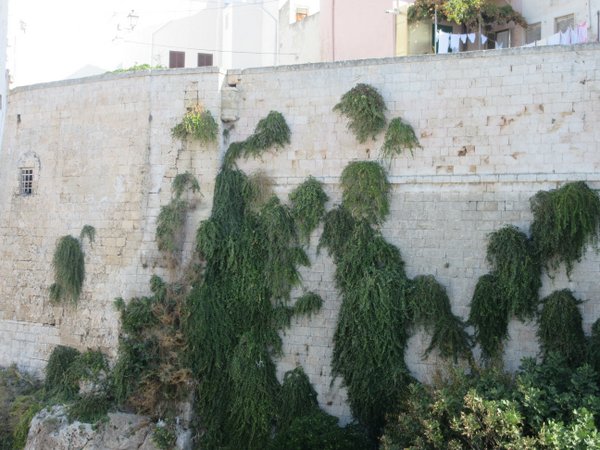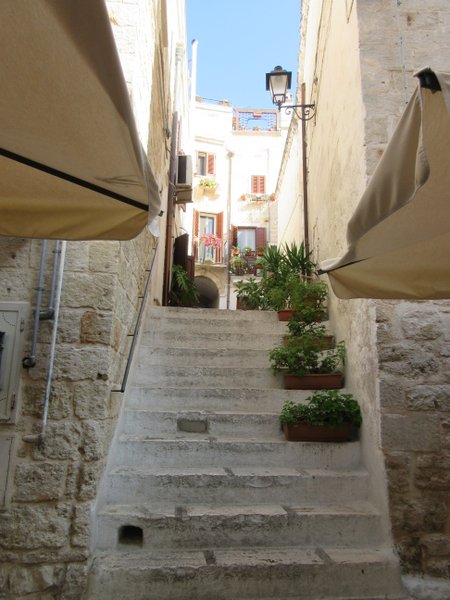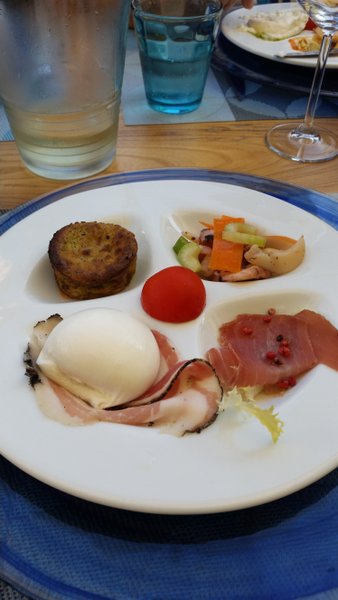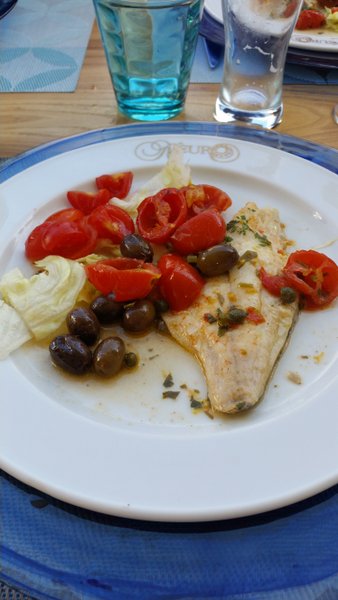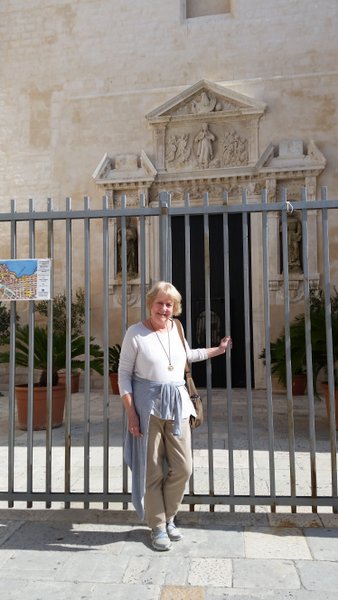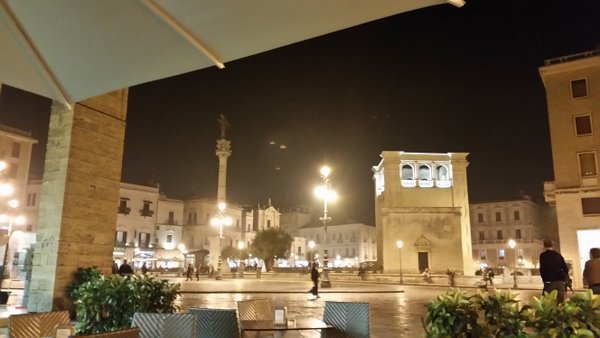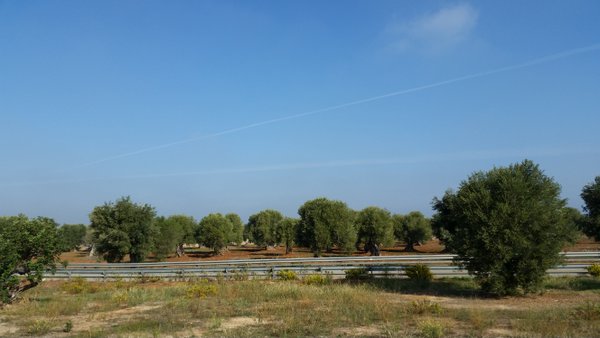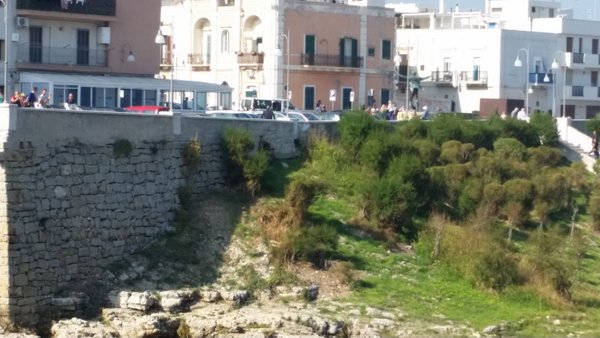<<<Back to Preface<<<A Journey
through Southern Italy by Joe Andriano, with Gail Andriano October 6-22, 2017 Part V-- from Lecce to
Polignano a Mare
|
Our four nights at the Patria Palace Hotel in Lecce were splendid . . . 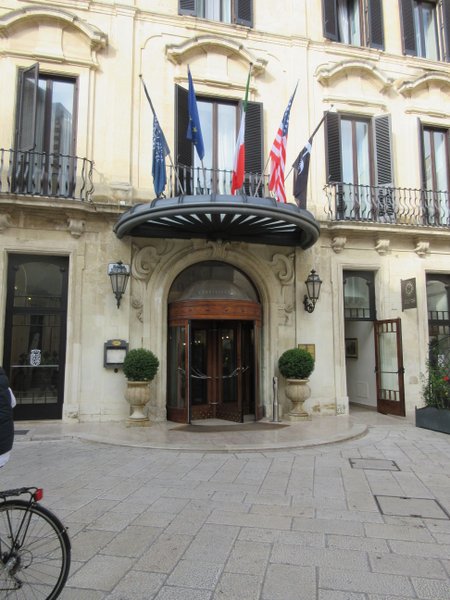
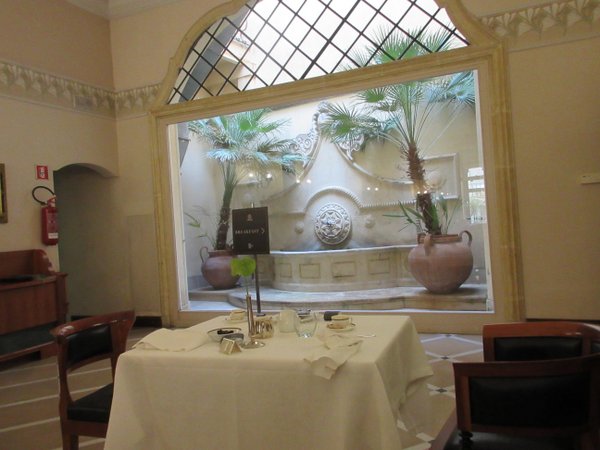
. . . and so was our last night in Lecce . . .
.
. . but we were ready to cross the Italian peninsula again, this time to visit
Sorrento. First, however, another excursion to the Adriatic coast for
lunch in Polignano a Mare. (<--Check out "The Thinking Traveller" site here!) On the way there, we passed thousands of olive trees.
In
the picture below you can see (if you look very carefully in the
right half of the image, just above the bushes) the bronze statue of Modugno
in the act of singing "Volare" with his arms outspread, ready to fly as in the song.
As our group walked not far from there, an elderly man scolded Gaetano for
allowing the two dozen of us to block the sidewalk (what of it there was), forcing
him to walk in the street and putting him in danger. Gaetano could tell from
his accent that the man was Northern Italian, and therefore more likely to take
umbrage at a group of tourists forcing him out into the street (where half of
us stood, actually). A constant theme of Gaetano’s ongoing narrative was that
Southern Italians are much more mellow, laid back, loving to do nothing and
doing it very well, gracie, unlike
the more driven, industrious, ambitious, Northerners. I wish I could’ve
understood Gaetano’s retort to the man; when Italians speak fast, I can’t
separate out all the words!
Speaking
of Gaetano, I remember the story he told about the statue you see him
holding in the picture below. That's not a woman but a man in
drag--representing a woman's fiance deceiving his landlord who demands
to have sex with her the night before the wedding, or face
eviction. This was apparently a fairly common abuse perpetrated by the latifondisti against the contadini in Southern Italy in the 19th century. (That's fellow-traveler Jan's cool (and ubiquitous) sun-hat at the bottom.)
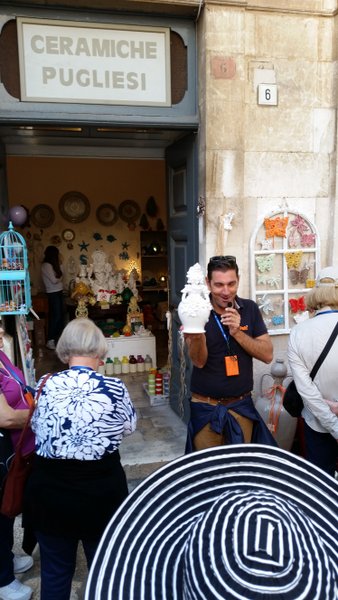
But what I'll always remember most about Polignano a Mare is the beauty of the landscape and, of course, the sea.
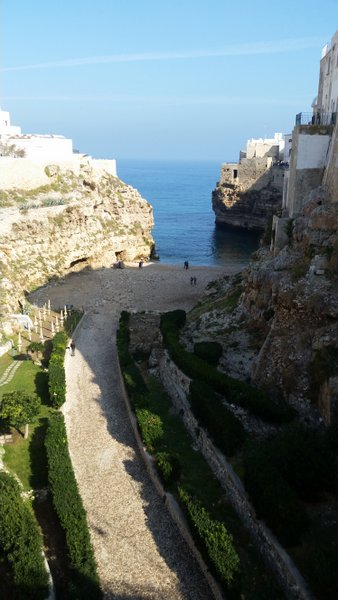
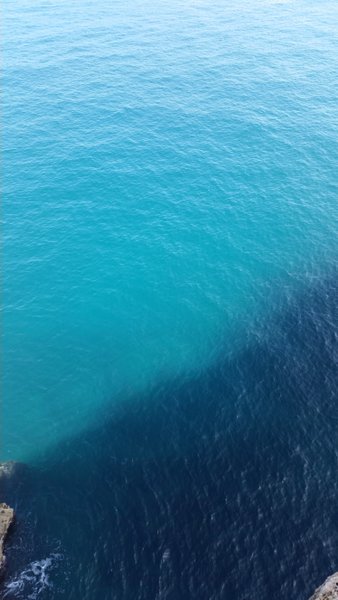
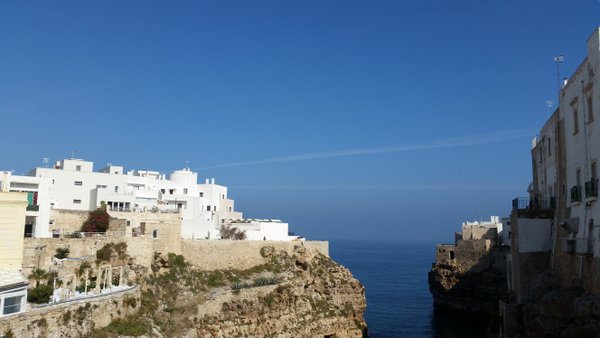
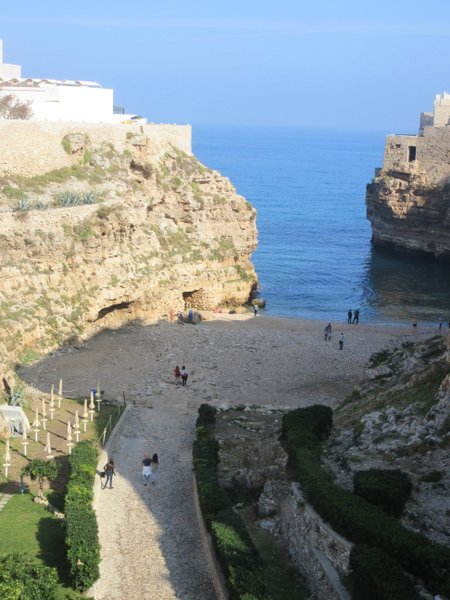
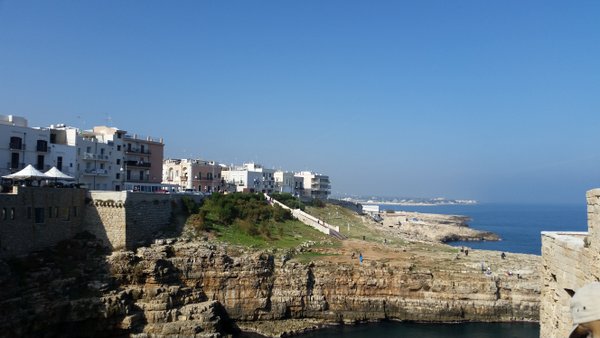
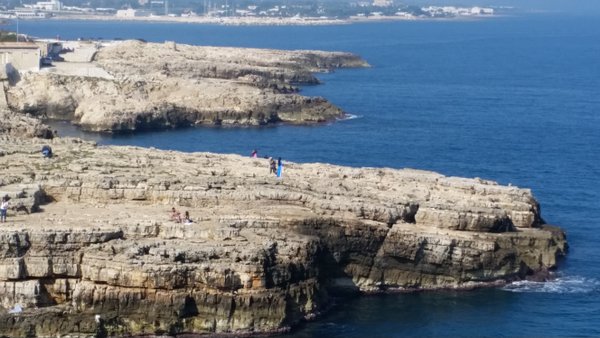
Capers
hanging in clusters on an ancient wall were kind of cool, too. And our
lunch in the town's central square was delicious. Notice the fresh
capers, of course. And there's Gail, just after lunch.
